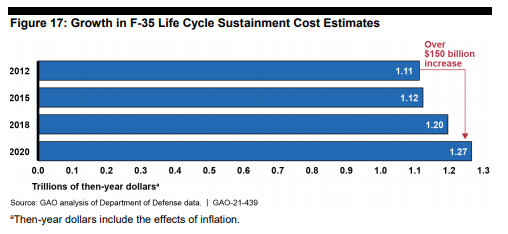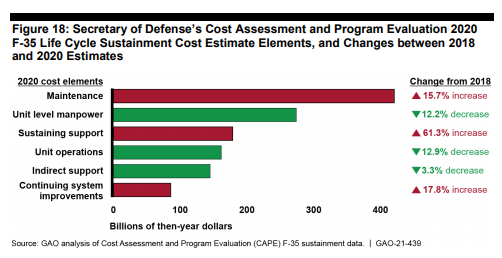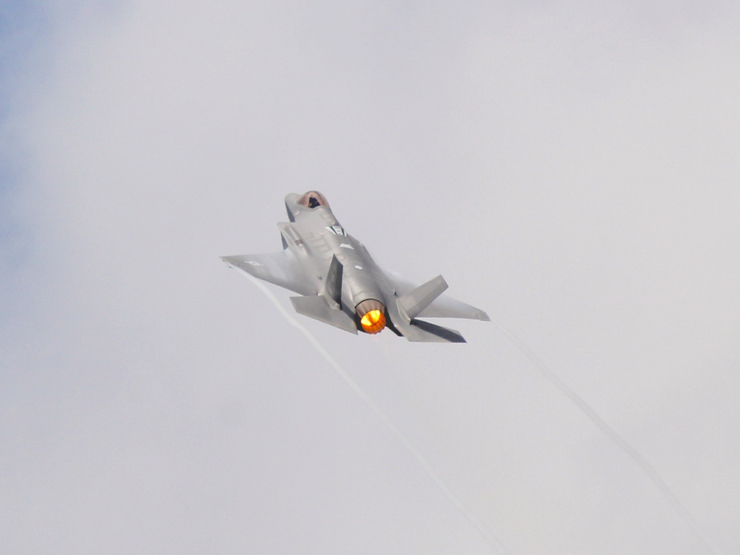
By Mike Flight @Shutterstock
The estimated sustainment costs for the F35 are on what fighter pilots like to call a “Zoom climb.” Since 2012, despite cost reduction efforts, sustainment costs are up by $150 billion. The Government Accountability Office (GOA) estimates that the cost to sustain the aircraft will be $6 billion more annually by 2036 than the Pentagon projects it can afford.
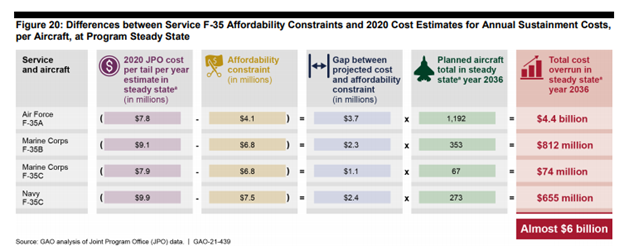
The F35 continues to struggle to meet its mission capable (MC) rate objective, which is a set measure of the percentage of time the aircraft are safe to fly and able to perform at least one mission. The F-35 also hasn’t been able to meet its full mission capable (FMC) rate objectives either. That’s percentage of time the aircraft are fully capable of accomplishing all tasked missions. To achieve better return on investment from the contractor, something the Department of Defense (DOD) has done before and is planning on doing with the F-35 now, is placing incentives on the FMC rate performance, rather than the MC rate performance. The DOD believes placing incentives on the FMC rate will provide a clearer picture of the aircraft’s capabilities and services. The F35 is a multi-mission platform, and placing incentives on single mission capabilities limits its effectiveness.
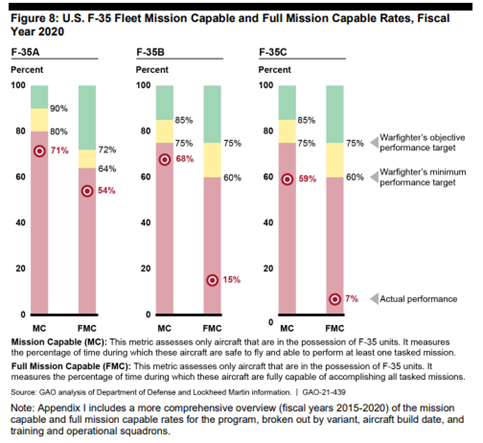
Read more from GAO’s July 2021 report, “F-35 SUSTAINMENT: DOD Needs to Cut Billions in Estimated Costs to Achieve Affordability,” below:
Since 2012, sustainment-related cost estimates for the life cycle of the F35 program have steadily increased. The F-35 program’s latest cost estimate, issued by the Secretary of Defense’s CAPE, projects overall sustainment (i.e., operating and support) costs for the F-35 program to be about $1.3 trillion through the program’s 66-year life cycle. 50 This projection reflects an increase of more than $150 billion since the program re-baselined in 2012, as depicted in figure 17.
CAPE’s 2020 estimate identified maintenance and unit-level manpower as the top sustainment-related cost elements for the F-35 program, as shown in figure 18.51 These cost elements make up nearly $695 billion, or 53 percent, of the total sustainment cost estimate. Additionally, sustaining support—an element that captures, among other things, contractor related support costs to help maintain F-35 operations—experienced the most significant increase, $68 billion, or 61.3 percent, above the last estimate, provided in 2018. This increase, according to CAPE officials, was mainly due to the program’s reliance on contractor labor, including ALIS administrators, to help maintain and operate the system.
Steve Schneider
Latest posts by Steve Schneider (see all)
- New Chinese Electromagnetic Surveillance Leaves “Nowhere to Hide” on Battlefield - March 15, 2024
- Amazon’s Nuclear Powered Data Center - March 7, 2024
- Skunk Works Rolls Out An Engineering Marvel - March 6, 2024
- Future of Airpower Takes First Flight - March 4, 2024
- A War Beneath the Waves – Trillions of Dollars at Stake - February 9, 2024

